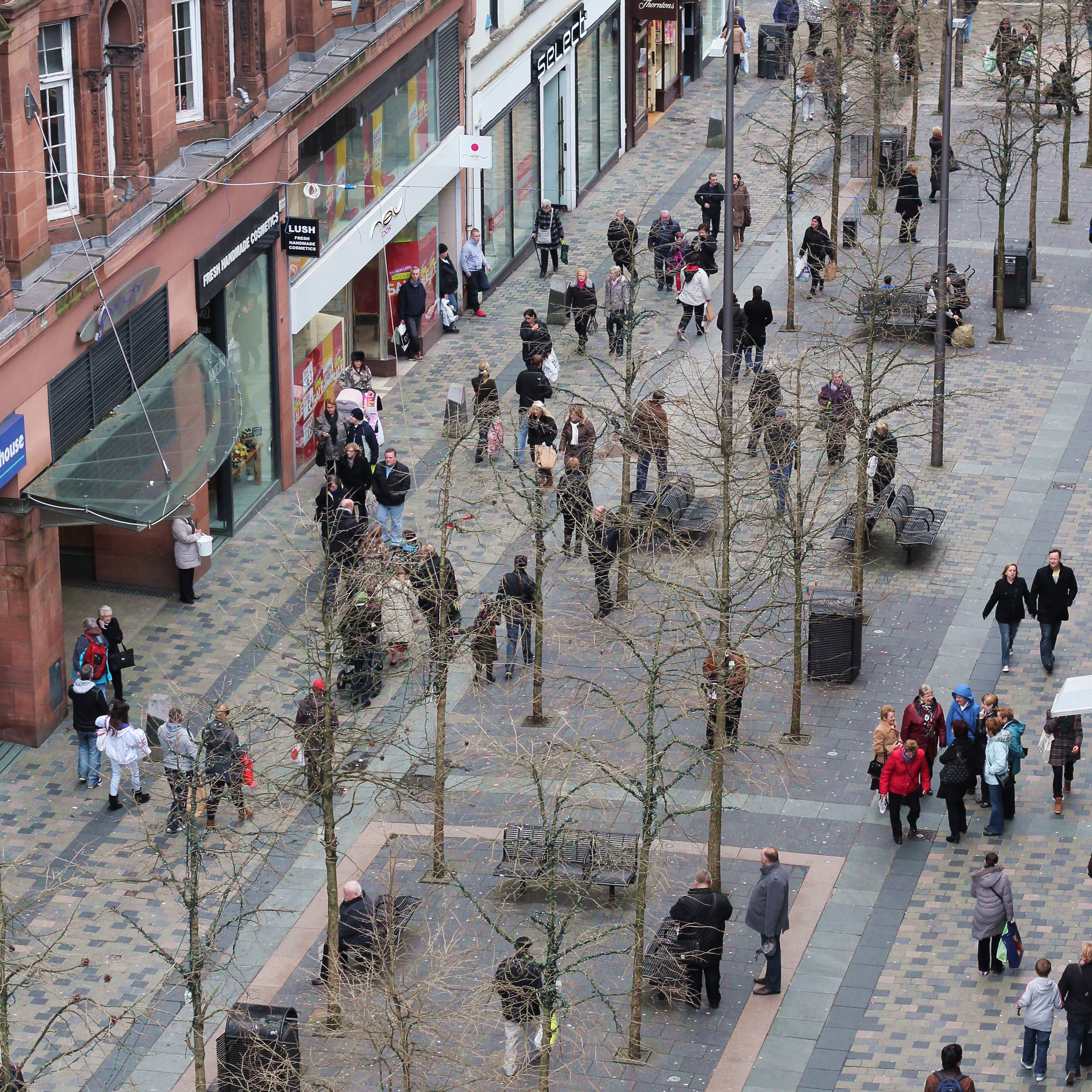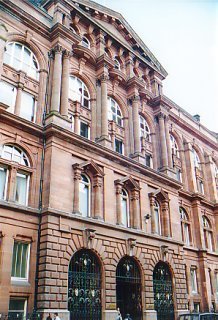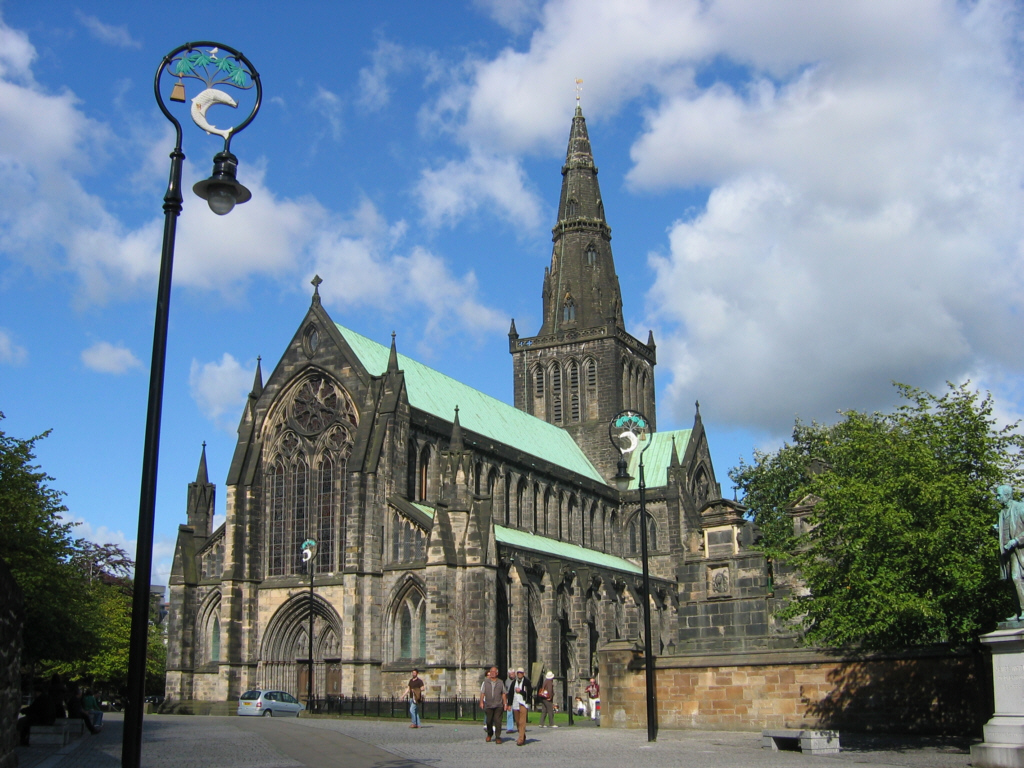|
Archibald McLellan (editor)
Archibald McLellan (1795 or 1797 – 22 October 1854) was a Glasgow coachbuilder, art collector, councillor and magistrate. The McLellan Galleries on Sauchiehall Street are named after him. Early life McLellan was baptised in Glasgow on 12 May 1796. His parents were Archibald McLellan (1746/7–1831), a coach-builder, and Christian Shillinglaw (''f'' ''c''.1774–1832). He was educated at the Grammar School and the University of Glasgow before joining his father in the coachbuilding business where he showed skill as a heraldic draughtsman. Career and public roles He was a Tory councillor on Glasgow Town Council from 1823 and became a Magistrate of the city at 25 years old. As a coachbuilder and harness-maker, he joined thIncorporation of the Hammermenof Glasgow, rising to be appointed Deacon-Convener of The Trades’ House in 1831. He held the office for two years. He was a member of the Glasgow Dilettanti Society in 1825 (president in 1834), trustee of Anderson's Univ ... [...More Info...] [...Related Items...] OR: [Wikipedia] [Google] [Baidu] |
McLellan Galleries
The McLellan Galleries are a major exhibition space in the city of Glasgow, Scotland, situated behind a frontage of shops and offices in Sauchiehall Street. History As part of the city's expansion on Blythswood Hill spearheaded by William Harley, the Galleries were built in 1855-6 to a design by architect James Smith of Blythswood Square at a cost of £40,000 .They are named after their founder, Archibald McLellan (1795–1854), a coach builder, councillor and patron of the arts. Following his death, Glasgow Corporation acquired the galleries and collection, and for a time they were known as the Corporation Halls before reverting to their former owner's name. The Galleries housed Glasgow School of Art from 1869 to 1899. In October 1986, the shop frontage building housing the Galleries was ravaged by fire, but they re-opened in 1990 as the largest quality, climate-controlled, temporary exhibition gallery in Scotland. They continue to be the largest exhibition space in t ... [...More Info...] [...Related Items...] OR: [Wikipedia] [Google] [Baidu] |
Sauchiehall Street
Sauchiehall Street () is one of the main shopping streets in the Glasgow city centre, city centre of Glasgow, Scotland, along with Buchanan Street and Argyle Street, Glasgow, Argyle Street. Although commonly associated with the city centre, Sauchiehall Street is over in length. At its central west end is Charing Cross, Glasgow, Charing Cross, followed by the Category-A listed crescents and terraces which lead up to Park District, Glasgow, Park Circus, finally meeting Argyle Street in the West End of Glasgow, West End in front of Kelvingrove Park and the Kelvingrove Museum, where they merge to form Dumbarton Road, continuing through Partick. Name Sauchiehall is a corruption of the Old English and Scots language, Scots , ; abounding in Salix caprea, willows and ; a low-lying meadow by the side of a river (compare Sausalito, California). is pronounced 'haw' in Scots and can be mistaken for the Scots , pronounced the same, meaning hall. History At its height, from 1880 to the 1 ... [...More Info...] [...Related Items...] OR: [Wikipedia] [Google] [Baidu] |
University Of Glasgow
, image = UofG Coat of Arms.png , image_size = 150px , caption = Coat of arms Flag , latin_name = Universitas Glasguensis , motto = la, Via, Veritas, Vita , mottoeng = The Way, The Truth, The Life , established = , type = Public research universityAncient university , endowment = £225.2 million , budget = £809.4 million , rector = Rita Rae, Lady Rae , chancellor = Dame Katherine Grainger , principal = Sir Anton Muscatelli , academic_staff = 4,680 (2020) , administrative_staff = 4,003 , students = () , undergrad = () , postgrad = () , city = Glasgow , country = Scotland, UK , colours = , website = , logo ... [...More Info...] [...Related Items...] OR: [Wikipedia] [Google] [Baidu] |
University Of Strathclyde
The University of Strathclyde ( gd, Oilthigh Shrath Chluaidh) is a public research university located in Glasgow, Scotland. Founded in 1796 as the Andersonian Institute, it is Glasgow's second-oldest university, having received its royal charter in 1964 as the first technological university in the United Kingdom. Taking its name from the historic Kingdom of Strathclyde, it is Scotland's third-largest university by number of students, with students and staff from over 100 countries. The institution was named University of the Year 2012 by Times Higher Education and again in 2019, becoming the first university to receive this award twice. The annual income of the institution for 2019–20 was £334.8 million of which £81.2 million was from research grants and contracts, with an expenditure of £298.8 million.. History The university was founded in 1796 through the will of John Anderson, professor of Natural Philosophy at the University of Glasgow, who left i ... [...More Info...] [...Related Items...] OR: [Wikipedia] [Google] [Baidu] |
Glasgow Cathedral
Glasgow Cathedral ( gd, Cathair-eaglais Ghlaschu) is a parish church of the Church of Scotland in Glasgow, Scotland. It is the oldest cathedral in mainland Scotland and the oldest building in Glasgow. The cathedral was the seat of the Archbishop of Glasgow, and the mother church of the Archdiocese of Glasgow and the Province of Glasgow, until the Scottish Reformation in the 16th century. Glasgow Cathedral and St Magnus Cathedral in Orkney are the only medieval cathedrals in Scotland to have survived the Reformation virtually intact. The medieval Bishop's Castle stood to the west of the cathedral until the 18th century. The cathedral is dedicated to Saint Mungo, the patron saint of Glasgow, whose tomb lies at the centre of the building's Lower Church. The first stone cathedral was dedicated in 1136, in the presence of David I. Fragments of this building have been found beneath the structure of the present cathedral, which was dedicated in 1197, although much of the present cathedr ... [...More Info...] [...Related Items...] OR: [Wikipedia] [Google] [Baidu] |
Mugdock Castle
Mugdock Castle was the stronghold of the Clan Graham from the middle of the 13th century. Its ruins are located in Mugdock Country Park, just west of the village of Mugdock in the parish of Strathblane. The castle is within the registration county of Stirlingshire, although it is only north of Milngavie, East Dunbartonshire, on the northern outskirts of Greater Glasgow. History The lands of Mugdock were a property of the Grahams from the mid-13th century, when David de Graham of Dundaff acquired them from the Earl of Lennox. It is possible that the castle was built by his descendant, Sir David de Graham (d. 1376),Fawcett, p.18 or by his son in 1372. In 1458, the lands were erected into the Barony of Mugdock. Later, in 1505, the Grahams were created Earls of Montrose. The most famous of the Montrose Grahams, James Graham, 1st Marquess of Montrose, may have been born at Mugdock Castle in 1612. During the Bishops' Wars, a prelude to the Wars of the Three Kingdoms, Montrose briefly ... [...More Info...] [...Related Items...] OR: [Wikipedia] [Google] [Baidu] |
Glasgow Necropolis
The Glasgow Necropolis is a Victorian cemetery in Glasgow, Scotland. It is on a low but very prominent hill to the east of Glasgow Cathedral (St. Mungo's Cathedral). Fifty thousand individuals have been buried here. Typical for the period, only a small percentage are named on monuments and not every grave has a stone. Approximately 3,500 monuments exist here. Background Following the creation of Père Lachaise Cemetery in Paris a wave of pressure began for cemeteries in Britain. This required a change in the law to allow burial for profit. Previously the parish church held responsibility for burying the dead but there was a growing need for an alternative. Glasgow was one of the first to join this campaign, having a growing population, with fewer and fewer attending church. Led by Lord Provost James Ewing of Strathleven, the planning of the cemetery was started by the Merchants' House of Glasgow in 1831, in anticipation of a change in the law. The Cemeteries Act was passed in 18 ... [...More Info...] [...Related Items...] OR: [Wikipedia] [Google] [Baidu] |
1790s Births
Year 179 ( CLXXIX) was a common year starting on Thursday (link will display the full calendar) of the Julian calendar. At the time, it was known as the Year of the Consulship of Aurelius and Veru (or, less frequently, year 932 ''Ab urbe condita''). The denomination 179 for this year has been used since the early medieval period, when the Anno Domini calendar era became the prevalent method in Europe for naming years. Events By place Roman empire * The Roman fort Castra Regina ("fortress by the Regen river") is built at Regensburg, on the right bank of the Danube in Germany. * Roman legionaries of Legio II ''Adiutrix'' engrave on the rock of the Trenčín Castle (Slovakia) the name of the town ''Laugaritio'', marking the northernmost point of Roman presence in that part of Europe. * Marcus Aurelius drives the Marcomanni over the Danube and reinforces the border. To repopulate and rebuild a devastated Pannonia, Rome allows the first German colonists to enter territory con ... [...More Info...] [...Related Items...] OR: [Wikipedia] [Google] [Baidu] |
1854 Deaths
Events January–March * January 4 – The McDonald Islands are discovered by Captain William McDonald aboard the ''Samarang''. * January 6 – The fictional detective Sherlock Holmes is perhaps born. * January 9 – The Teutonia Männerchor in Pittsburgh, U.S.A. is founded to promote German culture. * January 20 – The North Carolina General Assembly in the United States charters the Atlantic and North Carolina Railroad, to run from Goldsboro through New Bern, to the newly created seaport of Morehead City, near Beaufort. * January 21 – The iron clipper runs aground off the east coast of Ireland, on her maiden voyage out of Liverpool, bound for Australia, with the loss of at least 300 out of 650 on board. * February 11 – Major streets are lit by coal gas for the first time by the San Francisco Gas Company; 86 such lamps are turned on this evening in San Francisco, California. * February 13 – Mexican troops force William Walker ... [...More Info...] [...Related Items...] OR: [Wikipedia] [Google] [Baidu] |
Councillors In Glasgow
A councillor is an elected representative for a local government council in some countries. Canada Due to the control that the provinces have over their municipal governments, terms that councillors serve vary from province to province. Unlike most provincial elections, municipal elections are usually held on a fixed date of 4 years. Finland ''This is about honorary rank, not elected officials.'' In Finland councillor (''neuvos'') is the highest possible title of honour which can be granted by the President of Finland. There are several ranks of councillors and they have existed since the Russian Rule. Some examples of different councillors in Finland are as follows: * Councillor of State: the highest class of the titles of honour; granted to successful statesmen * Mining Councillor/Trade Councillor/Industry Councillor/Economy Councillor: granted to leading industry figures in different fields of the economy *Councillor of Parliament: granted to successful statesmen *Offi ... [...More Info...] [...Related Items...] OR: [Wikipedia] [Google] [Baidu] |
Businesspeople From Glasgow
A businessperson, businessman, or businesswoman is an individual who has founded, owns, or holds shares in (including as an angel investor) a private-sector company. A businessperson undertakes activities (commercial or industrial) for the purpose of generating cash flow, sales, and revenue by using a combination of human, financial, intellectual, and physical capital with a view to fueling economic development and growth. History Prehistoric period: Traders Since a "businessman" can mean anyone in industry or commerce, businesspeople have existed as long as industry and commerce have existed. "Commerce" can simply mean "trade", and trade has existed through all of recorded history. The first businesspeople in human history were traders or merchants. Medieval period: Rise of the merchant class Merchants emerged as a "class" in medieval Italy (compare, for example, the Vaishya, the traditional merchant caste in Indian society). Between 1300 and 1500, modern accoun ... [...More Info...] [...Related Items...] OR: [Wikipedia] [Google] [Baidu] |




